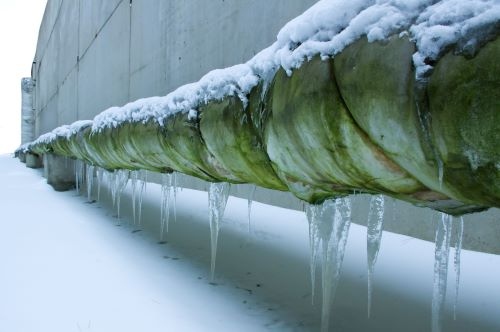June 2021, Vol. 248, No. 6
Guest Commentary
Natural Gas Production in Extreme Weather
By L. Brun Hilbert, Principal Engineer, and Julian F. Hallai, Managing Engineer, Exponent
In February 2021, an intense winter storm brought subzero temperatures to Texas and caused a nearly complete failure of the state’s power grid. Over the course of one week, tens of millions of residents lost heating, an estimated 111 died, and the state suffered over $100 billion in damage costs and economic losses.

Initial media reports attributed the power grid failure to “wellhead freeze,” or the freezing of natural gas wells. However, this is not the complete story. The power grid in Texas depends on a natural gas distribution network that originates at thousands of natural gas wells and feeds into compressors, pipelines and power stations.
During the February freeze event, the wells themselves did not freeze or fail, the ancillary equipment downstream did. This distinction is important, because it can affect the manner in which the natural gas industry seeks to mitigate risks from future freeze events.
The process of preparing wellheads to operate in freezing temperatures is relatively simple and inexpensive. Winterization of compressors and pipelines throughout a natural gas distribution network is generally more complex and costly.
By understanding the technological solutions available and the economic drivers behind them, natural gas producers can determine how best to prepare for future freeze events.
Effects on Pipelines
While methane is the largest component of natural gas, other compounds, such as natural gas liquids (NGLs), carbon dioxide and water vapor, exist in natural gas as byproducts of its production. When the temperature drops sufficiently, the water produced alongside the natural gas can crystallize inside the pipeline, forming ice-like hydrates that plug the valves coming out of the wellheads. It is this phenomenon, not the actual freezing of wells, that is referred to as wellhead freeze.
Downstream of the well, frozen water can affect pipelines, compressing stations and power generation plants. Last February, the water that had settled into the natural gas pipelines expanded as it froze, causing pipes to break. This breakage led to large-scale flooding in residences and businesses across Texas. The frozen pipes then caused the compressors that put natural gas into the pipeline to fail.
Without the ability to compress the natural gas, compressing stations could not transport it to power generation stations. Multiple power generators across the state subsequently were forced offline and were unable to supply power to the residences and businesses that needed it.
Tragically, this sequence of events did not prevent natural gas from continuing to stream from the ground. With nowhere to send it, drilling companies in the state’s largest oil field were forced to flare an Energy Department-estimated 1.6 Bcf/d (45 MMcm/d). In ordinary circumstances, this amount of gas could power tens of thousands of homes for at least a year. On this day, the burned energy source did nothing but emit carbon dioxide, a greenhouse gas linked to climate change, into the atmosphere.
Operate During Freezes
Technology is available to prevent freezing in gas operations. Following a similar freeze event in Texas in 2011, the Federal Energy and Regulatory Commission (FERC) commissioned a report on the impact of cold weather on gas production in Texas and New Mexico. Prepared by the Gas Technology Institute (GTI), this report details the following techniques for preventing freezing:
- Methanol injection – This anti-freeze solution can be injected not only into wellbores and pipelines, where wet gas flow occurs, but also into a pipeline system and production facilities.
- Buildings or “huts” to enclose production equipment – Housing structures can be heated by catalytic heaters and insulated by fiberglass to protect meters, wellhead valves, storage tanks and other ancillary equipment from freezing.
- Water removal from the gas stream by glycol dehydration – This technique helps enable the flow of gas without hydrate formation, freezing, water drop out or corrosion. In general, glycol dehydration is a low-cost system with continuous operation and minimal pressure loss.
- Heat application for freeze protection – Heat tracing coupled with insulation is commonly used in northern climates. Heating blankets, catalytic heaters, fuel line heaters and steam systems can help protect flow lines from freezing. This equipment tends to be more expensive and can provide an ignition point for gas if improperly managed.
A combination of winterization techniques often is required to fully protect a gas well production facility and its distribution network. We recommend that natural gas producers evaluate the pros and cons of each of these techniques as part of their freeze event risk assessment process.
Natural gas producers in the southern regions of the United States historically have forgone significant investment in freeze protection equipment, given the relative infrequency of cold weather. Many have viewed lost production as minimal compared to the sizable investment required to winterize equipment for a 100-year winter storm.
However, week-long freeze events in Texas have now occurred twice in a 10-year window and prompted significant loss. By taking a fresh look at the winterization technologies available and the economic drivers behind them, the natural gas industry may be able to prevent loss of life and dollars in future freeze events.
Authors: Dr. L. Brun Hilbert, Jr., Ph.D., P.E., is a principal engineer and Dr. Julian F. Hallai, Ph.D., P.E., PMP, is a managing engineer at Exponent.





Comments